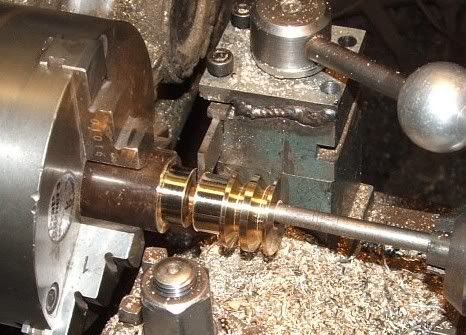zeeprogrammer
Well-Known Member
- Joined
- Mar 14, 2009
- Messages
- 3,362
- Reaction score
- 13
Actually, I have 3 questions...
First...what process do you use to pose a dome scratcher? Just start a topic? Find an existing topic? Any suggestions for posting my noggin busters?
Second...I've ruined two flywheels for a 2A model. How should it be mounted? Seems if I use the 3 jaw to hold onto the hub...the hole will be true but I suspect if I face and turn the wheel, it will fly away. If I hold onto the rim, I can't seem to get the hub true.
Last...Twice now when I've used the parting tool, the whole carriage pops up suddenly. It seems solid...nor do I detect anything when facing or turning. Any thoughts on what I need to do or am doing wrong? I suspect the gib. Should I expect to polish/prep/replace the gib on a new mini-lathe? Yes yes...Chinese...the kind that Grizzly, Harbor Freight, Cummins, et.al. sell.
I still think you need a category below newbie...'grub' maybe? I saw that GS-2 daylight locomotive posted from DDay today...seems unfair to him to have me in the same category.
First...what process do you use to pose a dome scratcher? Just start a topic? Find an existing topic? Any suggestions for posting my noggin busters?
Second...I've ruined two flywheels for a 2A model. How should it be mounted? Seems if I use the 3 jaw to hold onto the hub...the hole will be true but I suspect if I face and turn the wheel, it will fly away. If I hold onto the rim, I can't seem to get the hub true.
Last...Twice now when I've used the parting tool, the whole carriage pops up suddenly. It seems solid...nor do I detect anything when facing or turning. Any thoughts on what I need to do or am doing wrong? I suspect the gib. Should I expect to polish/prep/replace the gib on a new mini-lathe? Yes yes...Chinese...the kind that Grizzly, Harbor Freight, Cummins, et.al. sell.
I still think you need a category below newbie...'grub' maybe? I saw that GS-2 daylight locomotive posted from DDay today...seems unfair to him to have me in the same category.










